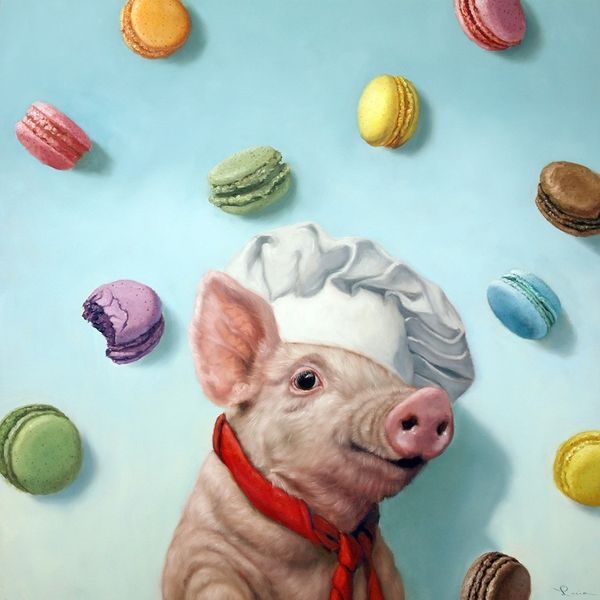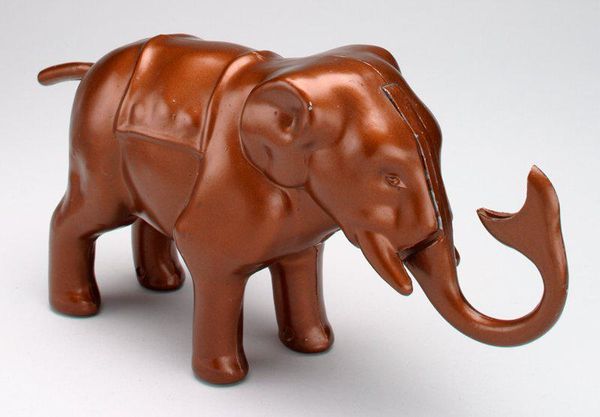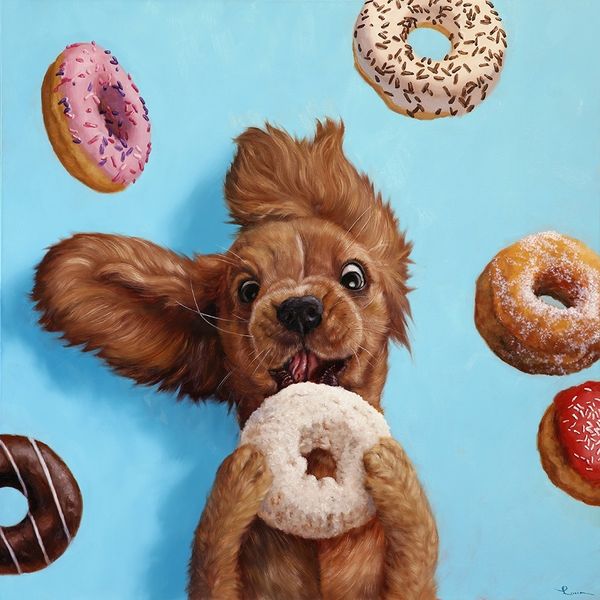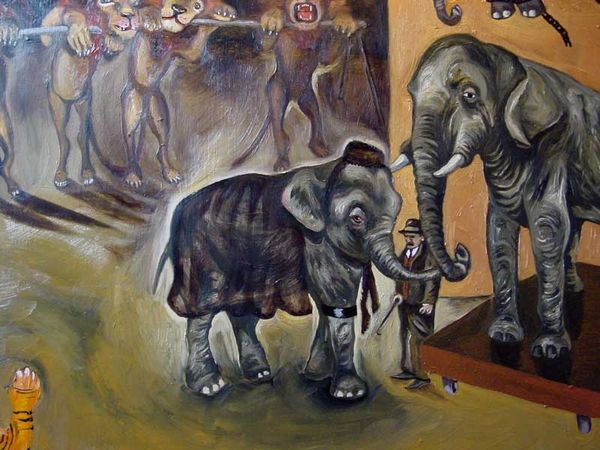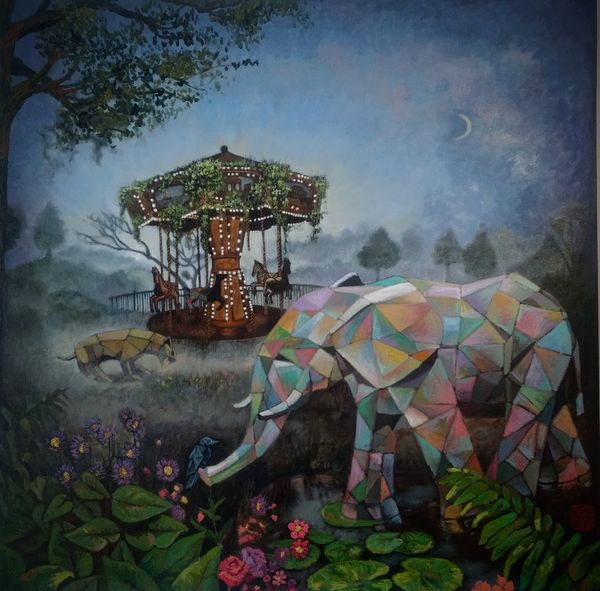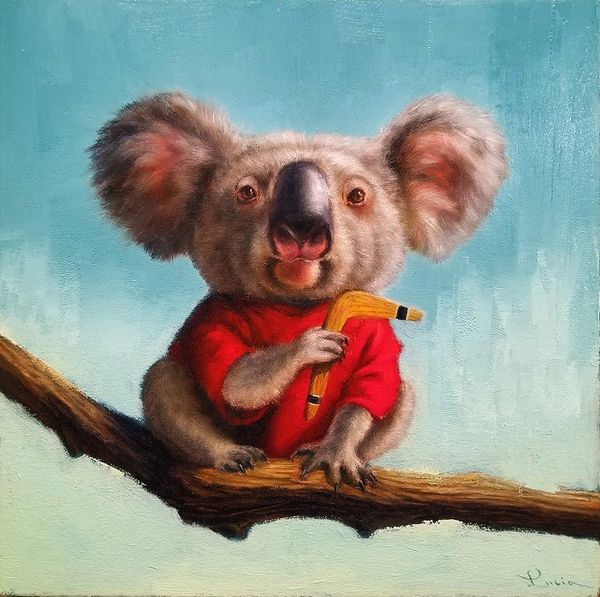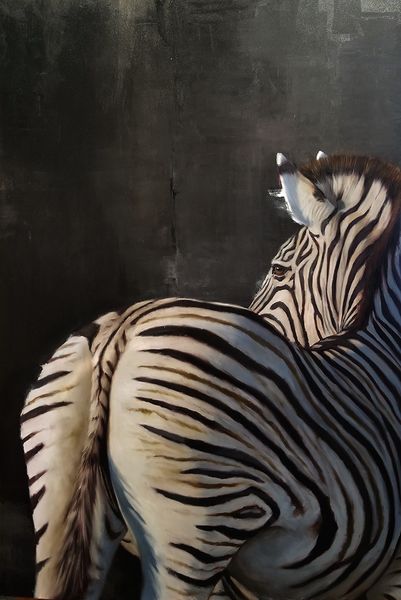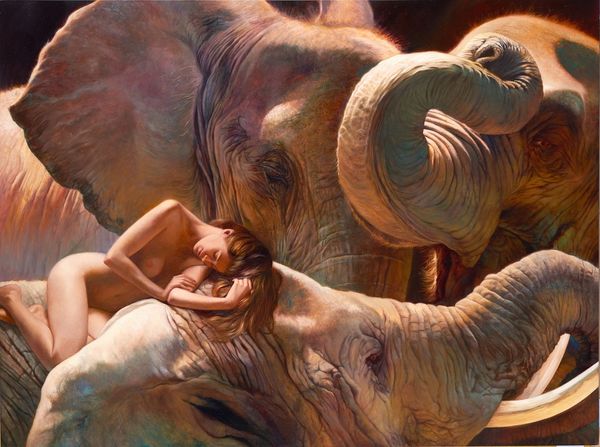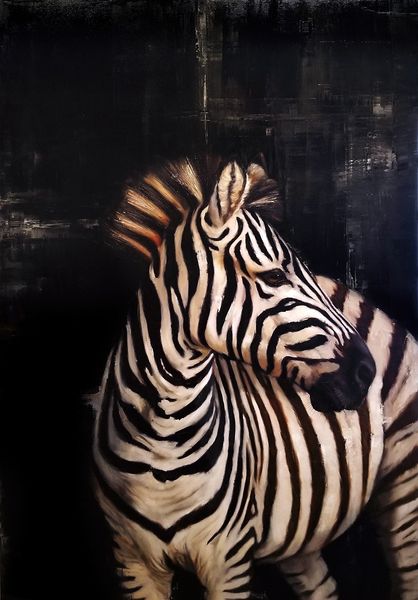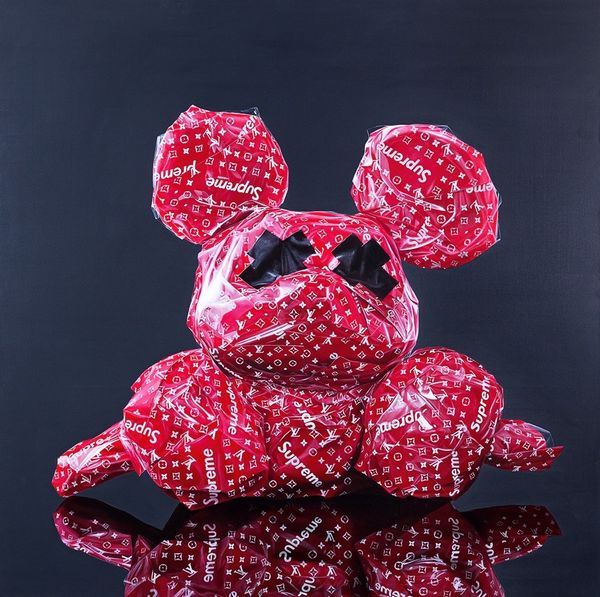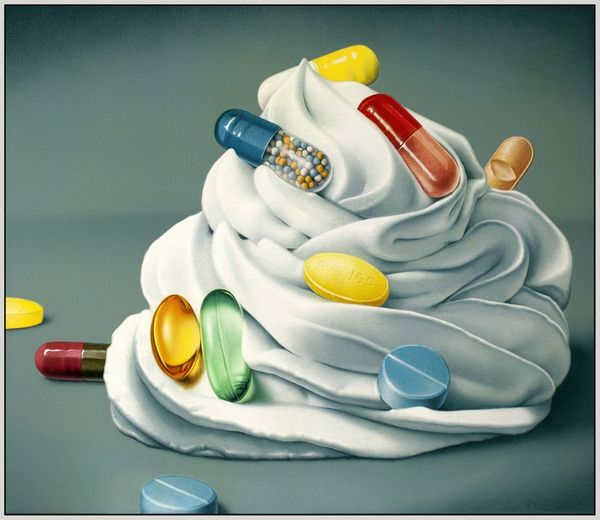
painting, oil-paint
#
portrait
#
animal
#
painting
#
oil-paint
#
animal portrait
#
animal photography
#
fruit
Copyright: Modern Artists: Artvee
Editor: We're looking at Lucia Heffernan's painting, "Feeling Nutty." I'm immediately drawn to the surreal juxtaposition: an elephant, clearly enjoying a jar of peanut butter. How do you approach a piece like this, where the subject matter feels so…unexpected? Curator: One might begin with the structural components. The artist has employed a rather classical composition: a central figure, reminiscent of portraiture. Note how the elephant’s form is meticulously rendered. Consider, however, the flatness of the background and how the peanuts create a decorative field. The juxtaposition of realism and the surreal prompts the question: what formal strategies are being used here, and to what end? Editor: So, you’re focusing on how the realistic details interact with the flat background and the repetitive peanuts to create meaning. Curator: Precisely. It’s a study in contrasts. Observe the texture of the elephant’s skin – a near photorealistic effect – juxtaposed with the simplistic rendering of the peanuts scattered about. Does this contrast generate tension? Does it serve to highlight the absurdity of the scene, or something else entirely? Editor: I see what you mean! It's not just a cute image; there's a calculated visual language at play. It makes you wonder why these elements were chosen specifically to convey this meaning. Curator: Precisely. And it is in exploring such contrasts, and the ways they inform our understanding of form and composition, that we may draw certain meaning. Editor: That's given me a new perspective, focusing on how elements combine. I will delve deeper when thinking about the components in a piece. Curator: Indeed, paying close attention to form allows us to look at visual art as more than its subject, revealing instead a complex layering of material meaning.
Comments
No comments
Be the first to comment and join the conversation on the ultimate creative platform.
